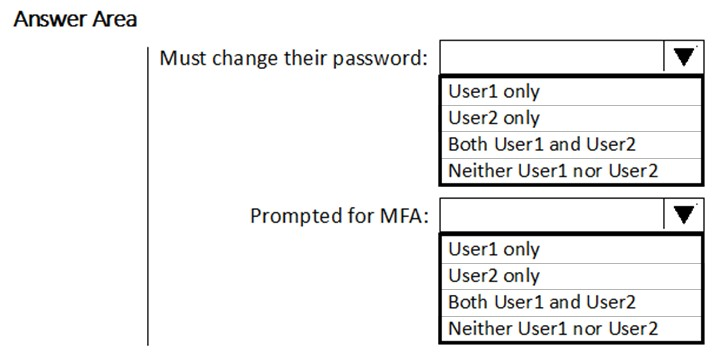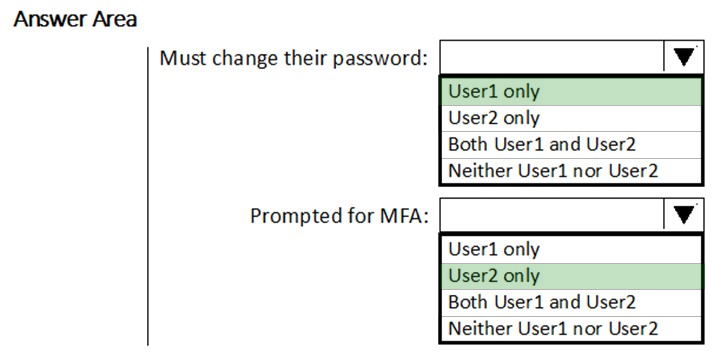

HOTSPOT -
You have a Microsoft Azure Active Directory (Azure AD) tenant named contoso.com that contains the users shown in the following table.
You create and enforce an Azure AD Identity Protection user risk policy that has the following settings:
✑ Assignments: Include Group1, Exclude Group2
✑ Conditions: User risk of Low and above
✑ Access: Allow access, Require password change
You need to identify how the policy affects User1 and User2.
What occurs when User1 and User2 sign in from an unfamiliar location? To answer, select the appropriate options in the answer area.
NOTE: Each correct selection is worth one point.
Hot Area:

kiketxu
Highly Voted 4 years, 3 months agow00t
4 years, 3 months agoYetijo
4 years agoSikula
Highly Voted 4 years, 3 months agoellik
4 years, 2 months agodcasabona
4 years, 2 months agoJoelB
4 years agoLillyLiver
3 years, 3 months agoLillyLiver
3 years, 3 months agoyayoayala
4 years, 2 months agoWMG
3 years, 11 months agoTomasValtor
Most Recent 2 years agoexamdog
2 years, 6 months agoSahMat
2 years, 7 months agopete26
2 years, 9 months agoSKam22
2 years, 10 months agoBulldozzer
2 years, 12 months agoWhatsamattr81
3 years agotatendazw
3 years, 1 month agortea
3 years, 2 months agoVickyRajdev
3 years, 3 months agoJared144
3 years, 5 months agokakakayayaya
3 years, 4 months agomgrcic56
3 years, 6 months agomkoprivnj
3 years, 7 months agoRstilekar
3 years, 7 months agoRstilekar
3 years, 7 months agoRstilekar
3 years, 7 months ago